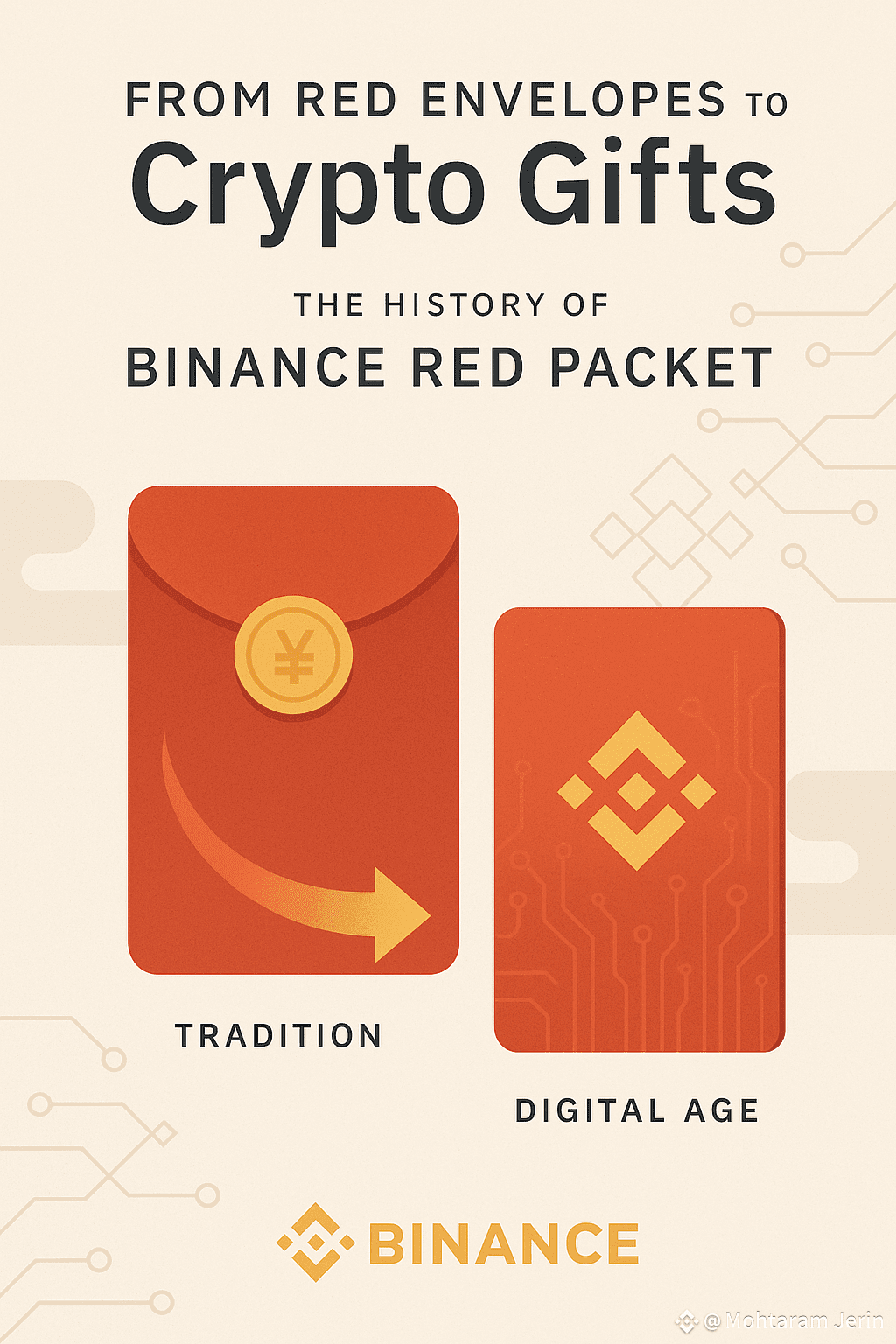Red packets—also known as red envelopes, hongbao (Mandarin), and lai see (Cantonese)—are more than festive wrappers of cash. They’re vessels of tradition, symbols of luck, and gestures of goodwill with centuries of history behind them. From red-threaded coins in ancient dynasties to crypto-laced envelopes on apps like WeChat and Binance, the red packet tradition continues to evolve—bridging the old with the new in surprising and meaningful ways.

The Origins of Red Packets
The roots of red packets stretch back to the Han dynasty (206 BCE–220 CE), where elders would string coins with red thread to protect children from evil spirits. These coins, believed to ward off misfortune, were known as yasui qian (压岁钱)—"money to suppress evil spirits."
A popular legend from the Tang dynasty (618–907 CE) tells of a demon named "Sui" who terrorized children on New Year’s Eve. Parents began wrapping coins in red paper to distract and protect their children, a practice that eventually morphed into the decorative red envelopes we recognize today.
By the Ming and Qing dynasties, red packets had become a cultural fixture, especially during Lunar New Year, symbolizing the bestowal of blessings and fortune from elders to the younger generation.
Symbolism and Social Meaning
A red packet is far more than just money—it’s a culturally rich symbol of:
Luck and protection
Respect and goodwill
Continuity between generations
The color red is central in Chinese culture, symbolizing joy, prosperity, and protection from evil. Red envelopes are customarily given during:
Lunar New Year
Weddings
Birthdays
Graduations
Births or housewarmings
Etiquette matters, too:
Use crisp, new bills
Avoid amounts with the number 4 (unlucky) and favor 8 (wealth)
Always give and receive with both hands
The Digital Transformation: Red Packets Go Online
With the rise of mobile payments and crypto, red packets have taken a tech-savvy turn—making tradition more inclusive and instant.
WeChat Red Packets
Launched in 2014, WeChat’s digital red envelope feature revolutionized the tradition. Users could send money directly in chats or groups, often with a fun twist: randomized splits where recipients race to open and see how much they got.
This gamified, viral approach saw over a billion red envelopes exchanged in just a few days during Lunar New Year—and the trend has only grown since. WeChat red packets now dominate festival gifting in China, blending digital convenience with cultural resonance.
Binance Red Packets
In a modern twist rooted in blockchain, Binance introduced red packets in cryptocurrency form. Users can choose the crypto type (e.g., BTC, ETH, BNB), add custom messages, and send digital blessings worldwide.
This innovation merges:
Decentralized finance (DeFi)
Traditional gifting
Borderless accessibility
For crypto enthusiasts, it’s a meaningful way to participate in age-old customs while embracing futuristic financial tools.
Other Digital Red Packet Platforms
Beyond WeChat and Binance, other platforms like Alipay, QQ, and even banks have developed red packet features—especially around the Lunar New Year. Increasingly, global platforms outside Asia also offer digital red envelope promotions, reflecting the tradition’s expanding reach.
Conclusion: Ancient Spirit in a Digital Age
From silk-threaded coins in imperial China to app-based crypto packets sent in seconds, red envelopes remain a powerful symbol of generosity, community, and hope.
The form may have changed—from paper to pixels—but the heart of the red packet tradition endures. It’s not about the money inside—it's about the thought, the wish for good fortune, and the connection it fosters.
Whether shared between grandparents and grandchildren or crypto traders across borders, red packets continue to light up our celebrations with the timeless glow of goodwill.